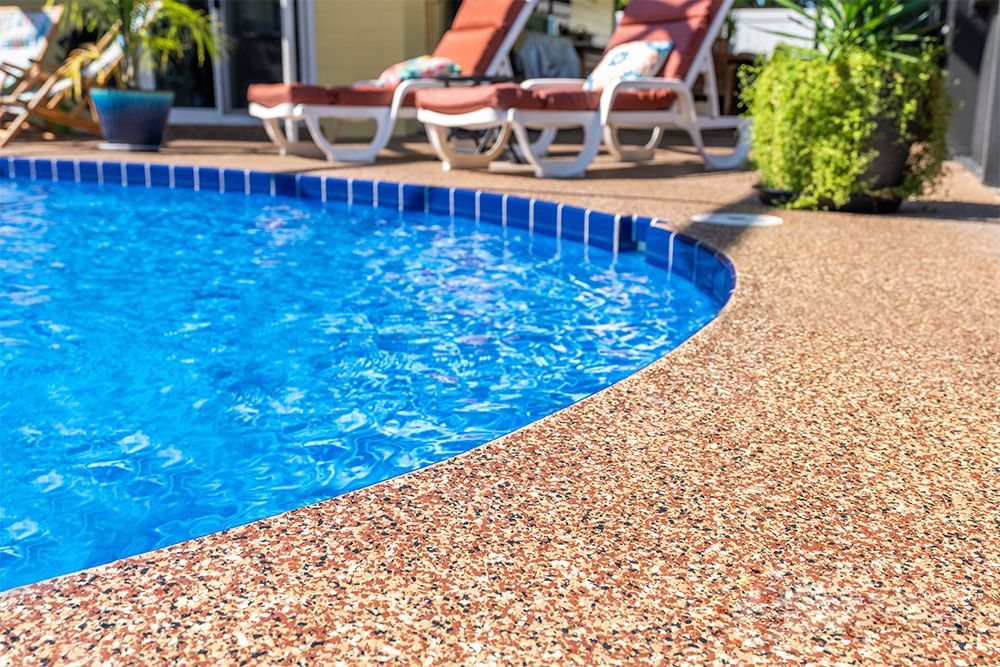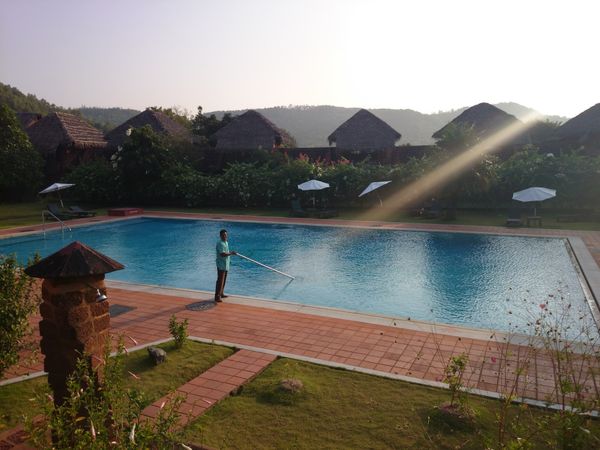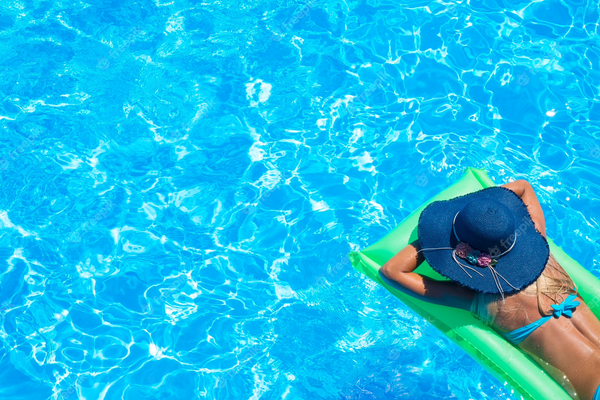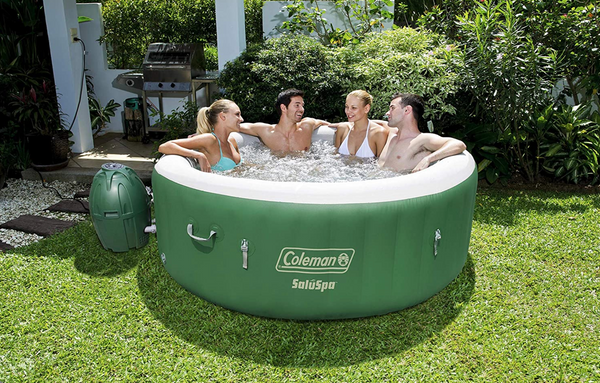Pool deck rubber is becoming more and more popular due to its versatility, durability, safety, low maintenance, and moisture resistance. It's no surprise that rubber flooring can be found in a variety of places, including gyms, basements, patios, pool decks, and playgrounds. Many restaurants, resorts, and even celebrity homes have installed rubber flooring for aesthetic reasons. You can find a wide selection of rubber surfaces for pool decks by visiting the link: https://safestep.pro/pool-deck/.
However, like all surfaces, rubber surfaces are often exposed to various negative influences, dirt, dust, and debris, and can become dirty and lose their visual beauty over time. Therefore, it is important to regularly clean and properly care for rubber surfaces. Rubber surfaces are easy to clean and fairly easy to care for, but it's important to know exactly how to care for them. Learn more about how to maintain a visually appealing rubber surface for years.
Common Stains and Their Culprits
Follow a simple procedure to clean the rubber covering for the Pool Deck. Cleaning rubber flooring usually requires regular vacuuming to remove dirt and stains from the surface left by shoes, pets, or the wind. You will need the following products to clean the rubber covering for the Pool Deck:
- Broom or vacuum cleaner;
- A sponge or cloth for removing dirt and stains;
- Mild detergent.
Before spot-cleaning the rubber surface, carefully remove any remaining wet dust as it can damage the rubber surface during cleaning. Then wipe the surface with a damp cloth. Dirt and urine stains can be easily removed using traditional cleaning methods. To remove stubborn stains, use a hand brush and press even harder on the surface. But be careful not to scratch your rubber surface.
Step-by-Step Cleaning Guide
To remove stubborn stains, use toothpaste or a household cleaning solution containing vinegar and warm water. Adding a few drops of lemon juice or lavender essential oil to this solution will create a pleasant refreshing aroma. This cleaning solution can regularly remove dirt and unpleasant odors, as well as disinfect your rubber surface. Textured or stitched rubber surfaces can be difficult to clean because dirt gets trapped between the grooves. A special rubber floor cleaning brush with a sharp end that moves up and down will help you clean your rubber surface effectively in minutes. Rubber is not affected by moisture, the rubber surface does not deform when in a wet environment, which is why it is chosen by the owners of pool decks. Therefore, after removing excess water from the surface, wait for the coating to dry naturally. It is also useful to place a mat near the entrance, which will reduce the amount of dirt on the surface.
Invest in regular cleaning or polishing of the rubber surface. The rubber surface is known to withstand wear and heavy walking. However, you can treat the surface from time to time to restore its original shine. In addition to regular thorough cleaning, perform a deep treatment once a month to polish your rubber surface. To care for the rubber surface of the pool deck, use fabric softener or wipe the surface with a solution of fabric softener and water.
If you decide to hire professionals, contact Safe Step's skilled team. Professionals are fully aware of all available methods of cleaning the rubber surface of the Pool Deck, this significantly reduces any risk of surface damage.
Tackling Tough Stains
Rubber surfaces are resistant to liquids, so accidental spills are possible. Water, tea, and other liquids remain on the surface awaiting cleaning. However, when cleaning rubber surfaces, it is necessary to take into account how well the surface can withstand such leakage. Most pool deck rubber manufacturers do not seal the seams. Liquid can seep through these open seams and cause irreparable damage to the lining.
Safe Step's team of experts takes all these potential issues into account from the start. The team will first analyze your rubber surface and suggest the best solution. Liquid damage to the rubber surface of the pool deck can cause, for example, rotting or mold growth. In this case, you need to install a special moisture-resistant gasket. This will significantly prevent the appearance of rot or mold in the future. Once installed, there is little that can be done to prevent liquid from entering the base. That's why it's important to work with a professional Safe Step rubber surfacing company to help you tackle your surfacing project.
Caring for Your Rubber Deck Post-Cleaning
Nothing beats a rubber surface for strength and durability. However, harsh chemicals or accidental spills can damage the surface. Knowing how to deal with this unpleasant situation, you can extend the life of the rubber surface. Harsh chemicals: acids, alkalis, gasoline, thinners, Pine-Sol, WD-40, and paint thinners can damage rubber surfaces. If these chemicals are accidentally spilled on a rubber surface, rinse immediately with water to minimize damage. Feces or animal urine: wash off the residue with a cleaning brush and wipe the surface with a damp disposable cloth. Clean the area with a vinegar-based cleaning solution and allow the surface time to air. It is always important to react quickly and correctly. Once this is done, contact a professional company for advice on how to proceed.
Rubber is durable and easy to maintain, but regular cleaning of the surface will keep it in good condition. Rubber surfaces need special attention during the first 7-10 months after installation. The elasticity of the rubber increases over time, making it more resistant to age spots and wear. Therefore, to extend the service life of the rubber surface, it is necessary to pay great attention to cleaning and care of the surface. Avoid oil-based or solvent-based floor cleaners, as they can damage the rubber surface. For example, the use of cleaning solutions based on turpentine or acetone can irreversibly damage the surface. Strong acid or alkaline detergents can also damage the floor. The surface of the pool deck consists of rubber granules connected with a polyurethane binder. Therefore, do not use chemicals that dissolve paints, binders, and adhesives (for example, xylene solutions). Dryers, metal brushes, and wire brushes are known to cut and scratch the rubber surface. They also remove granules from rubber flooring. Therefore, avoid washing the rubber surface with these products.
Conclusion: The Importance of Regular Care
Rubber pool deck surfaces have many key benefits, including durability, safety, moisture resistance, and aesthetics. However, like other surfaces, these surfaces are prone to contamination. If the rubber surface is not regularly cleaned and cared for, it can reduce its durability and visual appeal. Always keep the rubber surface clean and free of stains by following the information and advice in this article.






